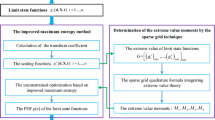Abstract
The obsolescence of electronic parts can cause a serious problem to sustain systems. In order to properly manage the obsolescence problems, reasonable and efficient obsolescence forecasting is required. In this paper, a time series based obsolescence forecasting method is proposed for electronic parts. The proposed method consists of three phases: a time series alignment of a part family for capturing important patterns, Box-Cox transformation for improving forecasting accuracy, and time series modeling for forecasting life cycle curves. In comparison to an existing method of product life cycle curve forecasting with evolutionary parametric drivers (Sandborn’s method), the proposed method can predict life cycle curves effectively while overcoming the limitations (requiring evolutionary parametric drivers, and assumption of Gaussian distribution) of the Sendborn’s method. A numerical example was provided to demonstrate the three phases of the proposed method. The results showed that the life cycle curves of flash memories could be predicted without the assumptions that the Sandborn’s method requires to generate.
Similar content being viewed by others
References
Bartels, B., Ermel, U., Sandborn, P., and Pecht, M. G., “Strategies to the Prediction, Mitigation and Management of Product Obsolescence,” John Wiley & Sons, 2012.
Sandborn, P., “Forecasting Technology and Part Obsolescence,” Proceedings of the Institution of Mechanical Engineers, Part B: Journal of Engineering Manufacture, 2015. (DOI: 10.1177/0954405415598923)
Henke, A. L. and Lai, S., “Automated Parts Obsolescence Prediction,” Proc. of the DMSMS Conference, 1997.
Josais, C., Terpenny, J. P., and McLean, K. J., “Component Obsolescence Risk Assessment,” Proc. of Industrial Engineering Research Conference, 2009.
Meixell, M. J. and Wu, S. D., “Scenario Analysis of Demand in a Technology Market Using Leading Indicators,” IEEE Transactions on Semiconductor Manufacturing, Vol. 14, No. 1, pp. 65–75, 2001.
Wu, S. D., Aytac, B., Berger, R. T., and Armbruster, C. A., “Managing Short Life-Cycle Technology Products for Agere Systems,” Interfaces, Vol. 36, No. 3, pp. 234–247, 2006.
van Jaarsveld, W. and Dekker, R., “Estimating Obsolescence Risk from Demand Data-A Case Study,” Erasmus University, Report No. EI2010-03, 2010.
Solomon, R., Sandborn, P. A., and Pecht, M. G., “Electronic Part Life Cycle Concepts and Obsolescence Forecasting,” IEEE Transactions on Components and Packaging Technologies, Vol. 23, No. 4, pp. 707–717, 2000.
Sandborn, P. A., Mauro, F., and Knox, R., “A Data Mining Based Approach to Electronic Part Obsolescence Forecasting,” IEEE Transactions on Components and Packaging Technologies, Vol. 30, No. 3, pp. 397–401, 2007.
Sandborn, P., Prabhakar, V., and Ahmad, O., “Forecasting Electronic Part Procurement Lifetimes to Enable the Management of DMSMS Obsolescence,” Microelectronics Reliability, Vol. 51, No. 2, pp. 392–399, 2011.
Hyndman, R., Koehler, A. B., Ord, J. K., and Snyder, R. D., “Forecasting with Exponential Smoothing: The State Space Approach,” Springer Science & Business Media, 2008.
Box, G. E. P. and Jenkins, G. M., “Time Series Analysis: Forecasting and Control,” Holden-Day, 1976.
Osborne, J. W., “Improving Your Data Transformations: Applying the Box-Cox Transformation,” Practical Assessment, Research & Evaluation, Vol. 15, No. 12, pp. 1–9, 2010.
Hyndman, R. J. and Athanasopoulos, G., “Forecasting: Principles and Practice,” 2012. https://www.otexts.org/fpp (Accessed 3 APR, 2017)
Box, G. E. P. and Cox, D. R., “An Analysis of Transformations,” Journal of the Royal Statistical Society. Series B (Methodological), Vol. 26, No. 2, pp. 211–252, 1964.
Cryer, J. D. and Chan, K.-S., “Time Series Analysis: With Applications in R,” Springer-Verlag New York, 2008.
Hyndman, R. J. and Khandakar, Y., “Automatic time Series for Forecasting: The Forecast Package for R,” Journal of Statistical Software, Vol. 27, No. 3, 2008. (DOI: 10.18637/jss.v027.i03)
Zheng, L., Nelson, R., Terpenny, J., and Sandborn, P., “Ontology-Based Knowledge Representation for Obsolescence Forecasting,” Journal of Computing and Information Science in Engineering, Vol. 13, No. 1, Paper No. 014501, 2013.
Author information
Authors and Affiliations
Corresponding author
Rights and permissions
About this article
Cite this article
Ma, J., Kim, N. Electronic part obsolescence forecasting based on time series modeling. Int. J. Precis. Eng. Manuf. 18, 771–777 (2017). https://doi.org/10.1007/s12541-017-0092-6
Received:
Revised:
Accepted:
Published:
Issue Date:
DOI: https://doi.org/10.1007/s12541-017-0092-6




